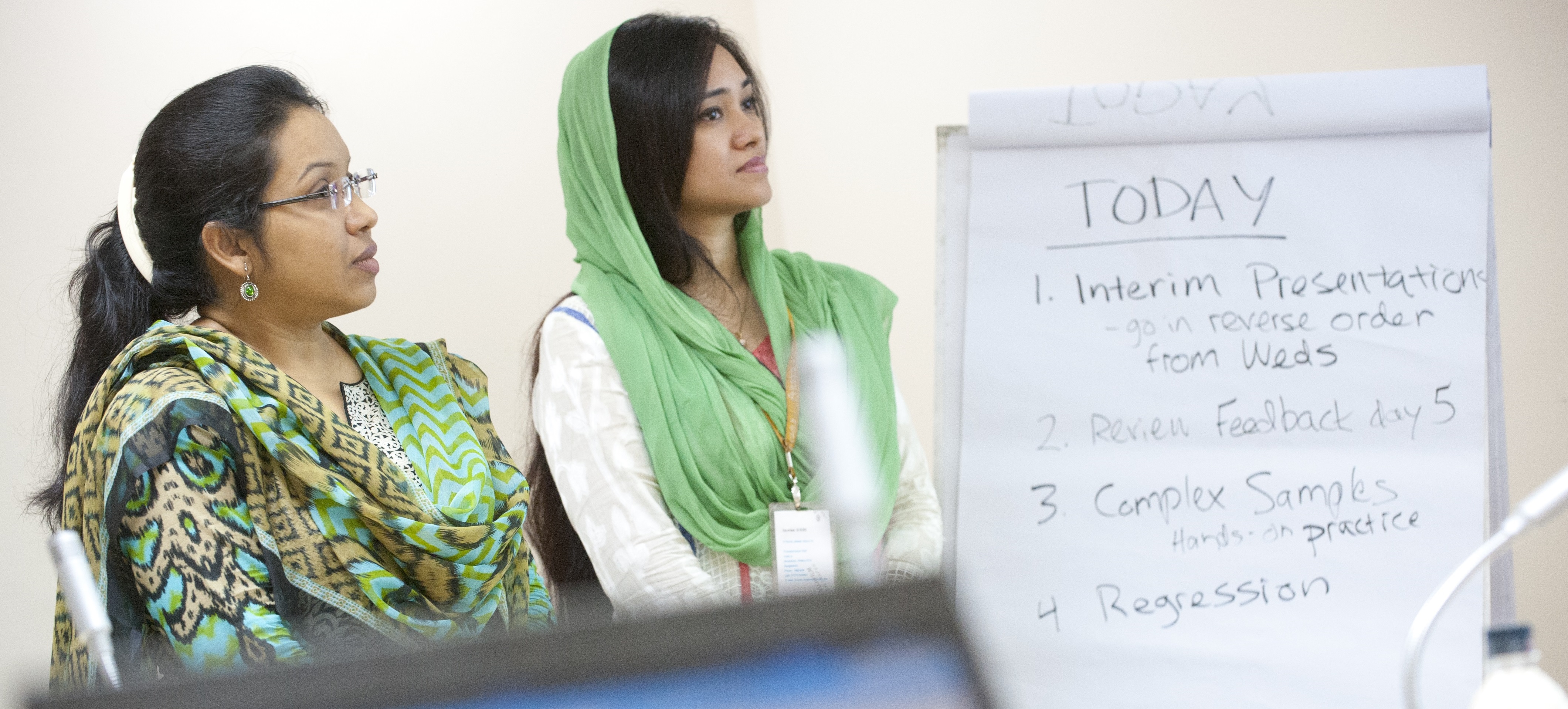Journal Articles
Search our database of 1000's of peer-reviewed journal articles that feature DHS data.
Featured Studies
Featured research topics go beyond a single research paper and often include multiple publications and user-friendly summaries and dissemination materials.
The DHS Fellows Program
Researchers in DHS countries work with DHS analysts to design, analyze, and write a publishable paper.
DHS Analysis Blogs
Read more about our recent research, innovative methods, and success stories.
Research and Further Analysis

The DHS Program's in-house Research and Analysis team conducts rigorous, timely, and innovative mixed-methods research on topics related to global public health, demography, and social epidemiology. Our team also trains, mentors, and closely collaborates with fellow researchers and stakeholders who are driven to utilize DHS Program surveys and other survey data to inform programs and policies in various countries and contexts.
Visit the publications search for a full list of publications. Also, go to the journal articles search for a full list of published journal artilcles that feature The DHS Program data.
DHS Research Reports
Mar 2024
Collecting Diverse Data on Gender and Sexuality in Demographic and Health Surveys: An OverviewThe United States Agency for International Development (USAID) has long been a champion of gender equality and in recent years have updated their policies to recognize that sex disaggregation in a binary does not fully reflect the populations being served.
Topics: Gender
Aug 2023
Trends in Men’s Gender Attitudes: Progress, Backsliding, or Stagnation?A growing literature has shown that social norms influence a wide range of social, health, and demographic outcomes and behaviors.
Topics: Gender, Mental Health
Sep 2022
The Gender Digital Divide: Evidence from Demographic and Health SurveysWomen may have less access to digital resources and use them less often than men; further, certain groups of women may be particularly disadvantaged in their use of digital technologies.
Topics: Gender
Aug 2022
Collective Gender and Fertility Norms and Modern Contraceptive UseEvidence shows that collective fertility and gender norms affect the use of contraceptives, especially women’s use of modern contraception.
Topics: Family Planning, Fertility and Fertility Preferences, Gender
Sep 2020
Typologies and Trajectories: A Descriptive Study of Men's Reproductive Life CourseThere is little research on the implications of family formation patterns for individual outcomes and life course trajectories of men.
Topics: Gender
Jul 2019
Trends, Inequalities, and Contextual Determinants of Child Marriage in AsiaChild marriage—defined as marriage before age 18—is considered to be a violation of human rights and is associated with numerous adverse health, social, and economic outcomes.
Topics: Gender, Geographic Information, Youth
Sep 2018
Potential Implications of the Ghana and Nepal Follow-Up Studies for DHS Questionnaires and Fieldwork ProceduresRecent follow-up mixed-methods studies undertaken by The Demographic and Health Surveys (DHS) Program in Ghana and Nepal sought to better understand the reasons behind unmet need and barriers to contraceptive use.
Topics: Family Planning, Fertility and Fertility Preferences, Gender, Maternal Health
Jul 2018
Does Men's Involvement Improve the Health Outcomes of Their Partners and Children?Men’s involvement in the health of their partners and children can play an important role in improving health outcomes.
Topics: Child Health and Development, Family Planning, Gender, Maternal Health
Aug 2017
Sexual and Reproductive Health in Early and Later Adolescence: DHS Data on Youth Age 10-19Adolescence is a period of transition from childhood to adulthood when many behaviors and events set the stage for adult health.
Topics: Domestic Violence, Family Planning, Fertility and Fertility Preferences, Gender, Youth
Sep 2013
Female Genital Cutting: The Interpretation of Recent DHS DataThis report presents data on female genital cutting collected by the Demographic and Health Surveys (DHS).
Topics: Female Genital Cutting